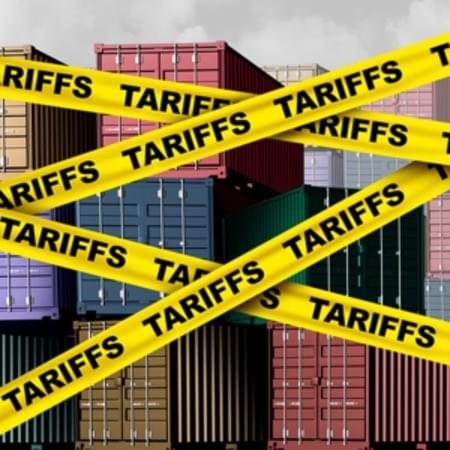
The question of what will happen with Indian tariffs at the end of the week has been settled—and the industry won’t be happy about it.
President Trump said in a Truth Social post today that imports from India into the United States will be hit with a 25% tariff beginning Friday, Aug. 1.
The new rate is significantly higher than the current 10% and almost as much as the 26% tariff that Trump threatened India with in his “Liberation Day” announcement on April 2.
The 25% tariff is expected to be added to existing duties. That means that gold and gemstone imports from India, which have previously been subject to a 5%-6% tax, could now incur duties over 30%.
Diamonds have historically not been subject to any kind of U.S. tariff, but since Customs records “country of origin” as where a stone is cut, this new levy will apply to virtually all diamonds.
Sabyasachi Ray, managing director of India’s Gem & Jewellery Export Promotion Council (GJEPC), tells JCK that the group will wait until an official executive order before making any comment.
However, the GJEPC’s former chair Vipul Shah calls the announcement a “big setback for the gems and jewelry industry.”
Pranay Navekar, an industry analyst based in India, tells JCK that “dollar demand will stay; units and hence carats will reduce. After an adjustment, the miners will pay the price.”
India exported $32.85 billion in gems and jewelry to the United States in 2024, according to an analysis from Ernst & Young.
In his post, Trump suggested India needed to be punished for its economic and foreign policies.
“Their Tariffs are far too high, among the highest in the World, and they have the most strenuous and obnoxious non-monetary Trade Barriers of any Country,” the post said.
“Also, they have always bought a vast majority of their military equipment from Russia, and are Russia’s largest buyer of ENERGY, along with China, at a time when everyone wants Russia to STOP THE KILLING IN UKRAINE—ALL THINGS NOT GOOD!”
The announcement sent shock waves through India, even as many predicted that the two countries would eventually come to terms.
“The expectation is that a trade deal is likely to be finalized shortly, and hence the period of applicability of these higher tariffs could be short,” Ranen Banerjee, partner at PwC India, told Reuters.
Nilesh Shah, managing director of investment fund Kotak Mahindra, said in India’s Economic Times, “Markets will hope for a ‘TACO’ trade”—a reference to the acronym that some traders use for “Trump always chickens out.”
According to a July 30 statement from India’s ministry of commerce and industry, the government is studying the “implications” of Trump’s message.
“India and the U.S. have been engaged in negotiations on concluding a fair, balanced, and mutually beneficial bilateral trade agreement over the last few months,” it said. “We remain committed to that objective…. The government will take all steps necessary to secure our national interest, as has been the case with other trade agreements.”
(Photo: Getty Images)
